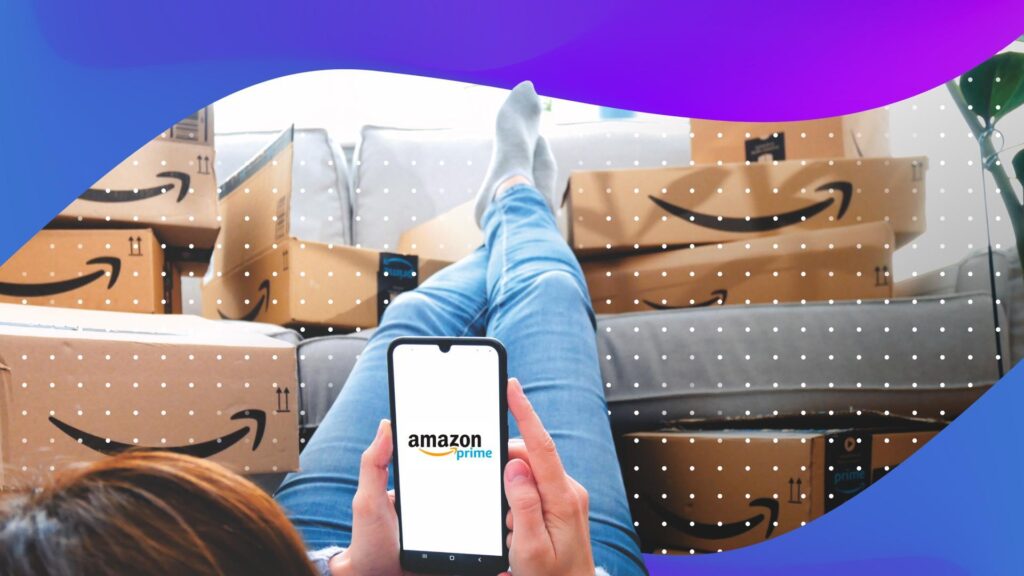Amazon’s “baby” section has certainly solidified itself as one of the site’s biggest and most popular categories, outperforming even megalith retailers like Walmart, Target and Diapers.com when it comes to online baby item sales.
In fact, according to Business Insider, Amazon holds almost half the market share in the online baby product market. Walmart and Target, though big names in the retail (and baby registry) industry as a whole, claim just 23% and 18%, respectively.
What is the Amazon Baby Category?
Amazon’s baby category includes a whole slew of products designed for kids 4 and under, as well as their parents, caregivers and other loved ones.

The category has several sub-categories under it, including:
- Diapering
- Feeding
- For moms
- Potty training
- Car seats
- Gifts
- Safety
- Strollers
- Baby care
- Activity & entertainment
- Travel gear
- Nursery
- Apparel & accessories
- Baby stationery
- Baby & toddler toys
- Pregnancy & maternity
There’s also a best sellers category, which shows off the hottest baby items across all sub-categories and brands.
The majority of the biggest baby-related brand names can be found on the site, including Munchkin, Johnson’s Baby. Baby Einstein, Evenflo, Tommee Tippee, Disney Baby and Playtex.
Amazon even has a few private, white-label brands that operate in the space. Its “Mama Bear” brand offers low-cost diapers, baby food, vitamins, healthcare products, bottles and more, while its “Elements” line boasts organic diapers and baby wipes a la Jessica Alba’s Honest Co.

The Selling Landscape
From a seller’s standpoint, there’s a lot of opportunity in Amazon’s baby category. As a whole, the U.S. baby market is worth about $73.86 billion right now, and by 2026? It’s expected to hit $109 billion worldwide.
A good chunk of baby-related sales are happening online, too.
About a third of all baby dollars are spent online, and between 2013 and 2018, the online market share grew by 10%. What’s even better? Those online sales are worth more, too.
According to Numerator, the average baby product purchase offline is just $6. Online? It’s more than triple that, at $21 on average.
Aside from the market opportunity as a whole, there are also some unique benefits to selling within the baby category on Amazon specifically:
- It lets you accept FSA payments. Amazon now accepts FSA (Flexible Savings Account) payments on select items within its baby category. This includes items like breast pumps, bottles and other common baby and maternity items that new parents need.
- It opens the door to even more purchases. Stats show that the “baby” category is a gateway one. Once people buy one item, they regularly purchase more and more within that sector. In fact, according to Business Insider, households with young kids buy around nine baby-related products a year — meaning lots of opportunity to up-sell, cross-sell and re-market.
- It gives you Subscribe & Save opportunities. Subscribe & Save is a great program that ensures regular, consistent and long-time sales, while also giving your customers serious value. Data shows that 40% of Amazon diaper buyers use the Subscribe & Save function at some point in their journey.
- It allows you to get on Amazon baby registries. Amazon is quickly becoming a favorite for baby registries, especially as longtime king Babies R Us is now out of the picture. As more and more digitally savvy Millennials have kids, you can expect that market share to only grow.
It’s important to note that a big slice of the baby product pie isn’t from parents, but actually gift-givers. In fact, a whopping 40% of baby-related sales come from caregivers or people buying gifts. So getting on registries and marketing toward non-parents (i.e. the fun aunt or mom’s best friend) are great ways to maximize your sales when operating within the Amazon baby category.

Potential Challenges for selling in Amazon Baby
There are pros and cons to everything, and while the Amazon baby category certainly comes with some serious potential, it also claims a handful of setbacks as well.
First of all, it’s a very crowded space.
According to stats, there are more than 3,100 different businesses operating in the baby product space — and that’s just online. Considering the growth the industry has seen in recent years, it’s likely the space will only get more crowded as we move forward.
The second biggest hold-up is that it’s a very brand-centric category.
Procter & Gamble command an $18 billion share of the total market, while longtime players Kimberly-Clark and Johnson & Johnson also dominate the space. While it’s certainly possible to drum up decent sales as a newbie in the category, the majority of the market continues to go to the big fish who have proven themselves over years of sales and across generations.

The Bottom Line
Nothing’s impossible though, and of course, the products you choose, your pricing and advertising strategy and how you market yourself all play a role.
Just do your research, know your customers and pay attention to logistics and service, and carving out your space in this ultra-popular niche may just be possible.
To learn more about how to successfully advertise in the Amazon Baby category, email [email protected]
You Might Be Interested In












